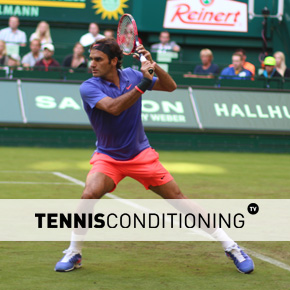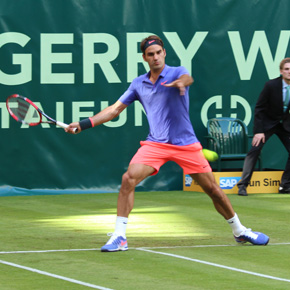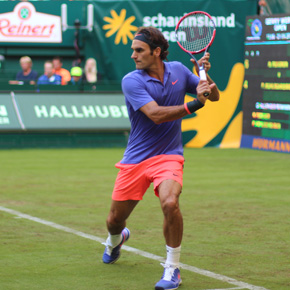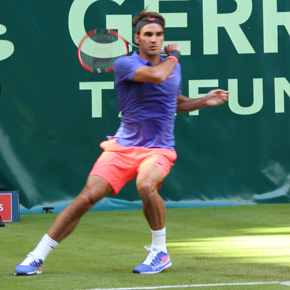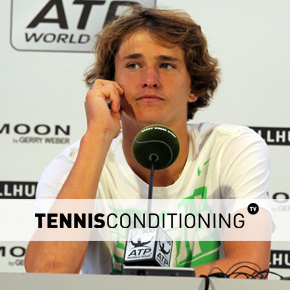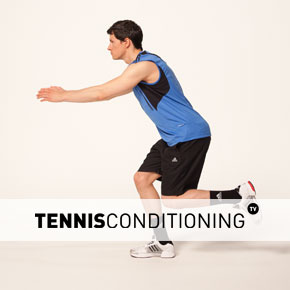The tennis analysis allows coaches to design effective training programs by avoiding injuries and enhancing tennis-specific performance of their athletes.
The purpose of the tennis analysis is to determine what a tennis player must be able to do in order to have success and design a training program accordingly.
For example, you want to make sure that the athlete is not impeded by anything, which is why we do the analysis of limitations!
When you look at tennis and see what injuries are common or what limitations are common, then you can decide if flexibility is the cause for the limitation.
The question to be answered is what causes these injuries to occur and how does the training program address them?
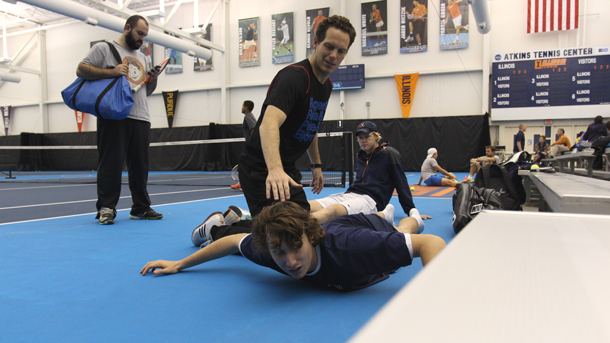
FIRST, make the athlete very balanced with their strength so that the joints function properly by enhancing range of motion (ROM)/flexibility.
So, the goal is to make the athletes very balanced (muscle balanced) with their strength and increase range of motion so that the joints function properly. Then you apply everything else.
Most coaches just want to focus on resistance or speed but if you make something faster or you make something stronger but it’s already imbalanced then you will increase the imbalance, which will then commonly lead to injury and hence the coach did nothing that was beneficial.
In other words, the training program was ineffective and the coach wasted the athlete’s time…this is the most common error committed by coaches!
Tennis Analysis Example
This tennis analysis is based on male professional athletes performing on a hard-court surface, playing best-of-three sets in a mild climate (80 F).
Movement Tennis Analysis
- Lower-Body Requirements: Multidirectional
Forward running
Backpedalling
Sliding
Side-Step
Carioca (high hits require extension)
- Upper-Body Requirements: Transverse Plane Action Dominant
Trunk Rotation during ground strokes and serves
- Rate of Movement
Maximum or near maximum effort
- Joints Involved
Knees (flexion/extension)
Hips (flexion/extension/internal & external rotation)
Trunk (rotation)
Shoulders (flexion/extension/internal & external rotation)
Elbow (flexion/extension)
Wrist (flexion/extension; abduction/adduction)
Ankle (plantar & dorsi flexion; especially on the serve)
- Muscle Considerations
Serve – deceleration (lunge in landing position {tendinitis}; shoulder: follow through) & dynamic stability
Ground strokes –> acceleration/deceleration –> agility considerations (change of direction; piriformis); hip adductors/abductors speed for lateral movement (sliding); quads, hamstrings, glutes (forward/backward)
Physiological Analysis
- Average rally on hard-court lasts ~ 15 seconds, with up to 20 seconds rest intervals between points (dictated by the server)
- 1 minute rest during change over (after every 2 games; odd number of games)
- Matches last 45 – 150 minutes
- Energy System Contributions
- Power Output: medium to near maximal/ maximal < 20 seconds
- Force demands vary based on style of play (e.g. baseliner vs. serve-and-volley; offensive style vs. defensive style) and particular stroke (e.g. 1st serve usually maximum force output; 2nd serve medium to sub-maximal force output)
Analysis of Limitations
- Common Injuries
Rotator Cuff Tears
Lower-Back strains
Tendinitis (Knee)
Ankle roll-overs
“Tennis” elbow (lateral epicondilitis)
Wrist
- Good vs. Great Performers

Great performers maintain dynamic equilibrium (better dynamic stability capabilities; center of mass control) better during shots, which improves shot accuracy and speed
Very efficient transfer of energy (kinetic chain efficiency)
“mental toughness”; they find a way to win
Better shot selection (variety; different spins & speed)
Great players can maintain a higher level of force output for a longer period of time –> stamina
- Recovery/Fatigue
Fatigue will set in, especially in the shoulder due to repeated 1st serves at max velocity/force output
General buffering capabilities (legs)
Related Articles
- Player Development: How To Become a Great Tennis Player
- How to Find Sponsors To Fund Your Pro Tennis Career
- Why Balance & Stability Training Is Important
Training Zone
In this section we provide you with some more workouts and training tips you may be interested in to optimize your training:

